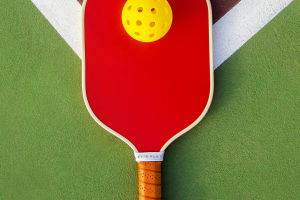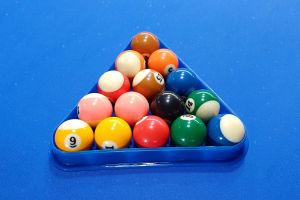Billiards is a captivating indoor sport that combines skill, strategy, and precision.
Whether for leisure or in competitive settings, billiards draws enthusiasts with its unique allure and challenge.
History of Billiards
The origins of billiards can be traced back to 15th-century Europe. The earliest billiard tables are believed to have evolved from lawn bowling games, adapted for indoor play on tables. Initially, billiards was a pastime reserved for the nobility and upper classes.
However, as time progressed, the sport gradually gained popularity and became accessible to a broader audience. This shift transformed billiards from a genteel activity into a widely enjoyed form of entertainment.
Types of Billiards
Billiards includes various forms, each with its own rules and characteristics. The three primary types are snooker, pool (or nine-ball), and French billiards (or carom billiards).
1. Snooker: Snooker is perhaps the most complex of the billiard games. It uses 22 balls, including one white cue ball, 15 red balls, and 6 colored balls. The objective is to score points by potting the balls in a specific sequence: red balls followed by colored balls.
Players alternate turns, and the game requires both strategic planning and precise execution. The player who accumulates the highest score by the end of the game is declared the winner.
2. Pool (Nine-Ball): Pool, specifically nine-ball, is a fast-paced and skillful variant of billiards. It involves 9 numbered balls and a cue ball. The aim is to pot the balls in numerical order, with the ultimate goal being to pot the 9-ball. The game is known for its speed and the need for precise positioning and strategic play.
3. French Billiards: Also known as carom billiards, French billiards are played on a table without pockets. The game uses three balls: one red and two white (one of which is marked).
The objective is to score points by making the cue ball contact both the other balls in a single shot, either by hitting them directly or by causing them to strike the table's rails. The game emphasizes skillful control and strategic shot placement.
Basic Rules of Billiards
While different billiard games have specific rules, they share some fundamental principles:
1. Opening Shot: The game begins with an opening shot, which typically requires the cue ball to hit a target ball and either make it contact the table's rail or pot it into a pocket (in games with pockets).
2. Hitting Order: In pool games, players must strike the balls in numerical order. In snooker, players alternate between potting red balls and colored balls, following a specific sequence.
3. Fouls: Common fouls in billiards include striking non-target balls, failing to make the cue ball contact the rails (in games requiring this), or causing the cue ball to jump off the table. Fouls generally result in penalties, such as giving the opponent a free shot or awarding them extra points.
The Charm of Billiards
Billiards is more than just a competitive sport; it is an art form that demands concentration, skill, and thoughtful strategy. Each shot in billiards tests a player's overall ability, requiring them to navigate complex scenarios with calm and precision. The game’s elegance lies in its blend of physical dexterity and mental acuity.
Moreover, billiards is a social and recreational activity that fosters interaction and relaxation. Whether enjoyed during friendly gatherings or as a family pastime, billiards offers a platform for people to unwind and engage in enjoyable competition. The game’s social aspect enhances relationships and creates memorable experiences.
Billiards beautifully combines skill, strategy, and entertainment. It offers both physical and mental challenges, enhancing reaction time, coordination, patience, and perseverance.
Whether pursued as a recreational activity or a competitive sport, billiards holds an enduring appeal. By understanding its history, types, rules, and skills, more people can appreciate and enjoy this fascinating game.


